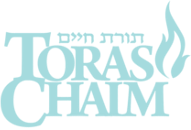The conflict of the Jewish people and Amalek – central to the story of Purim – is a continuation of the ongoing struggle between their forebears, Yaakov and Eisav. Yaakov and Eisav were twins, but whereas some twins are identical, these twins were opposites. Yaakov inhabited the world of the spirit, the tents of study and prayer, while Eisav was firmly implanted in the material world.
Yaakov confronted Eisav both physically and spiritually, meeting up with him and his camp, and wrestling his angel. And we, the descendants of Yaakov, mark two days of the year dedicated to our confrontation with Eisav. On Purim we recall the physical battle defeating Haman, and on Yom Kippur we eliminate the angel of Eisav, as our Sages noted that the word “HaSatan” has the numerical value 364, as the Satan – the angel of Eisav – has sway on every day of the year except Yom Kippur.
These two days represent the two ways in which we manage our confrontation with Eisav’s world. We may retreat from the material world to the safety of the world of the spirit, as on Yom Kippur. Or, as on Purim, we may engage the physical world as people of the spirit, recognizing that G-d has made us both body and soul, and that we must use the physical world to advance our spiritual goals.
This is no small feat. As Rambam wrote in the fifth chapter of his Shemonah Perakim:
Know that to live according to this standard is to arrive at a very high degree of perfection, which, in consequence of the difficulty of attainment, only a few, after long and continuous perseverance on the paths of virtue, have succeeded in reaching. If there be found a man who has accomplished this, that is one who exerts all the faculties of his soul, and directs them towards the sole ideal of comprehending God, using all his powers of mind and body, be they great or small, for the attainment of that which leads directly or indirectly to virtue, I would place him in a rank not lower than that of the prophets. Such a man, before he does a single act or deed, considers and reflects whether or not it will bring him to that goal, and if it will, then, and then only, does he do it.
This kind of spiritually-driven and centered engagement with the physical world is a more profound challenge and accomplishment than detachment from that world. Indeed, according to the mystical tradition, the spiritually focused Yom Kippurim is simply k’Purim, a weaker counterpart of the greater day of Purim, a day when we are deeply engaged in the physical world.
The first time someone dressed up to deliver foodstuffs – the first costumed Mishloach Manos delivery – was when Yaakov dressed as Eisav to bring food to his father. Yaakov did this at the behest of his mother Rivkah, who recognized that he would otherwise lose the blessings of the material world that Yitzchak was about to grant Eisav. Yaakov would have lost them because he had not cultivated a relationship with his father grounded in the reality of the physical world. The verse describes the love of Yitzchak for Eisav as based on the food Eisav would bring him. This dose of reality, that as physical human beings we forge bonds by tending to the physical needs of others, was what Yaakov had to engage in order to gain physical greatness within his world of spirituality.
As the great Rav Yisrael Salanter put it, “Your friend’s materialism is your spirituality.” Taking care of the material needs of others is an expansion of – not a retreat from – spirituality.
This idea was taught beautifully by the Rambam at the end of his laws of Purim:
It is preferable for a person to be more liberal with his donations to the poor than to be lavish in his preparation of the Purim feast or in sending portions to his friends. For there is no greater and more splendid happiness than to gladden the hearts of the poor, the orphans, the widows, and the converts. One who brings happiness to the hearts of these unfortunate individuals resembles the Divine Presence, which Isaiah (57:15) describes as having the tendency “to revive the spirit of the lowly and to revive those with broken hearts.”
The material act of taking care of the needy and the lonely is the ultimate act of spirituality, and creates the ultimate happiness, the greatest joy of Purim, the joy of emulating and experiencing the Divine. Try it and you will see.
This is our suggestion: Take the time on Purim day to visit someone who does not have piles of Mishloach Manos brought to them, and reach out to those to whom you have little connection. You will make the biggest difference by not just dropping a food basket on their doorstep, but taking the time for a real visit, sitting together and talking for a bit, bringing joy and company to some, and growing a relationship with others. Bring your child or grandchild along, if you can. This will undoubtedly be the most joyous part of your day for all of you.
The story is told that Rav Yisrael Salanter failed to appear in shul one Yom Kippur night. It was eventually discovered that on his way to shul he passed a modest home, and heard a baby crying, with no one attempting to comfort her. Rav Yisrael realized that the baby’s mother had put her to sleep, and then gone to shul for Kol Nidrei, expecting the baby to remain asleep. But the baby had awoken, and Rav Yisrael decided that it was his place to stay and comfort the baby, to choose the spirituality of this baby’s material comfort, to choose Purim over Yom Kippurim.
May Hashem bless each of us with the true spirituality of giving and caring.
